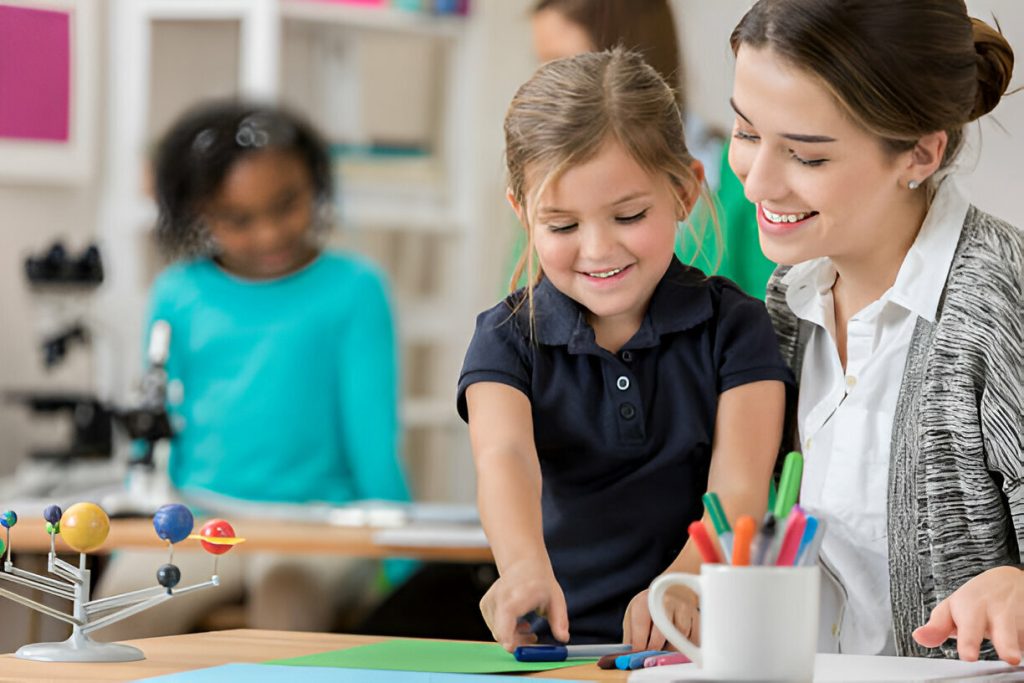The Impact of Environmental Enrichment on Training Success: Creating a Stimulating Learning Space

The Importance of Learning Environments
Learning environments significantly influence the effectiveness of training programs. Creating a stimulating learning space can lead to enhanced cognitive function, improved retention, and overall training success. But what exactly constitutes environmental enrichment, and how does it impact our ability to learn?
Environmental enrichment refers to the process of enhancing learning spaces to provide additional stimuli that benefit cognitive processes. Various strategies can be employed to enrich these environments, including:
- Incorporating natural elements, such as plants and sunlight, which has been shown to reduce stress and improve concentration.
- Utilizing interactive and engaging materials that encourage hands-on experience, such as models or digital tools that allow for simulation and practice.
- Designing flexible spaces that promote collaboration and creativity, such as open areas with movable furniture that can adapt to different group sizes and learning activities.
Research supports the notion that enriched environments correlate with superior learning outcomes. For instance, studies from educational institutions like the University of Minnesota reveal that classrooms filled with natural light and greenery lead to marked improvements in students’ focus and lowers anxiety levels. Additionally, children exposed to enriched environments tend to display significantly enhanced cognitive development, showcasing improved memory retention and higher grades.
Among the prominent benefits of enriched learning environments are:
- Increased motivation and engagement: When learners are in environments that are visually stimulating and interactive, they tend to invest more in their learning experiences. For example, schools such as the High Tech High charter school in California have created project-based learning settings that actively pull students into their education.
- Enhanced problem-solving skills and critical thinking: Open spaces that encourage brainstorming and teamwork foster an atmosphere where collaboration leads to innovative solutions. Successful companies like Google have designed their offices to include communal areas that serve as think spaces where spontaneous discussions can lead to breakthrough ideas.
- Improved emotional well-being and social interaction: Learning environments that prioritize well-being, such as those incorporating sensory rooms or relaxation areas, can significantly contribute to positive mental health. For instance, schools in San Francisco have introduced mindfulness programs alongside creative spaces to help reduce student stress and foster a sense of community.
As educational institutions and training organizations strive to adapt to the evolving needs of learners, understanding the role of environmental enrichment becomes crucial. Effective design not only focuses on aesthetics but also integrates educational philosophy to cater to diverse learning styles. In this article, we will further explore specific strategies and examples from around the United States that illustrate how a well-designed learning environment fosters training success. Embracing these changes can pave the way for future generations to flourish academically and emotionally.

EXPLORE MORE: Click here for helpful financial resources
Understanding Environmental Enrichment
Environmental enrichment extends beyond mere decoration; it involves meticulously crafted spaces designed to stimulate learners mentally and emotionally. Such environments are catalysts for creativity and motivation, paving the way for improved knowledge retention and practical application. This concept, grounded in both psychological studies and educational practices, emphasizes the importance of fostering diverse sensory experiences that challenge the brain and engage learners in multiple ways.
For starters, lighting plays a pivotal role in creating an enriched learning environment. Research indicates that well-lit spaces not only enhance visual comfort but also boost mood and energy levels. A study published in the journal Environment and Behavior highlights that classrooms illuminated by daylight can lead to a 20% increase in student engagement and focus compared to those artificially lit with fluorescent bulbs. Incorporating large windows and skylights into design schemes can significantly transform traditional learning settings into dynamic spaces conducive to learning.
Furthermore, the inclusion of natural elements in learning environments has gained attention for its profound impact on learner psychology. Biophilic design, which emphasizes the integration of nature into architecture, has shown promising outcomes in educational settings. For example, the Green School in Bali has become a beacon for sustainability and immersive learning by featuring open-air classrooms surrounded by lush greenery. Studies have demonstrated that exposure to such environments reduces stress, increases concentration, and enhances overall academic performance.
Another dimension of environmental enrichment involves incorporating interactive technology into learning spaces. These tools cater to various learning styles and urgencies, inviting learners to actively participate in the educational process. Institutions like MIT have embraced these advancements by creating laboratories equipped with state-of-the-art technology, facilitating hands-on learning experiences that drive deeper understanding and retention of information. The integration of augmented reality and simulation-based learning allows students to visualize concepts in ways that traditional textbooks cannot provide.
- Personalization: Learning environments that allow for customization based on individual preferences lead to a sense of ownership and investment in the learning process.
- Community spaces: Designating areas for social interaction encourages collaboration, which is essential for cognitive development and effective problem-solving.
- Sensory feedback: Elements that provide sensory engagement—such as textures, sounds, and moving visuals—can significantly enhance the learning experience.
The synergy of these factors creates enriched environments that are not only functional but also adaptable to the diverse needs of learners. As we delve deeper into the various strategies that foster such stimulating learning spaces, it’s evident that the future of training success relies heavily on embracing environmental enrichment as a core component of educational design. This foundational shift calls for educators, administrators, and designers to reflect on how physical spaces can be reimagined to ignite curiosity and foster lifelong learning.
| Category | Description |
|---|---|
| Cognitive Engagement | A well-structured learning environment stimulates curiosity and critical thinking, leading to increased knowledge retention. |
| Motivational Factors | Incorporating varied learning tools and interactive elements fosters greater student involvement and drives enthusiasm for learning. |
Environmental enrichment significantly contributes to the overall success of training programs by transforming traditional spaces into dynamic learning hubs. In such environments, learners are often more engaged because they encounter diverse methods of interaction—be it through visual aids, hands-on activities, or collaborative technologies. The strategic use of contextual learning opportunities enhances the way knowledge is assimilated and applied, allowing learners to approach problems from multiple angles.Moreover, a stimulating environment promotes a sense of wellbeing among learners, which can lead to improved psychological and emotional states conducive to learning. By fostering creativity and innovation, the training process becomes less rigid and more adaptable to individual needs. In a world where adaptability is key, understanding how environmental factors influence learning outcomes is essential for educators aiming to maximize training efficacy while enriching learner experiences. As interest grows in educational psychology and neuroscience, the implications of these findings are broad, suggesting the need for further exploration into customized training environments.
DISCOVER MORE: Click here for innovative techniques
The Role of Flexibility and Movement in Learning Spaces
In addition to visual and sensory stimulation, the design of physical space plays a crucial role in enhancing the learning experience. Recent studies suggest that allowing for mobility within learning environments can lead to better concentration and creativity. Flexible seating arrangements, such as standing desks or collaborative workspaces, encourage learners to shift their positions and engage in different activities, prompting increased focus and retention. A 2019 study published in the journal Frontiers in Education demonstrated that learners with access to flexible seating options showed a 40% increase in productivity compared to those restricted to traditional desks.
Mobility is not just about physical movement; it also encompasses the freedom to explore one’s learning environment. Educational institutions in the United States, like the Rhetoric and Writing Studies program at the University of Utah, have adopted an “active learning” approach where students are encouraged to move around during discussions and projects. This format creates a more dynamic learning experience and promotes engagement and collaboration, making it more likely that information will be retained and applied in real-world situations.
Incorporating Art and Aesthetics
Another vital aspect of creating an enriched learning environment is embracing art and aesthetics. Environments that feature creative elements and artistic displays not only enhance the aesthetic appeal but also have been shown to stimulate cognitive processes. A visual study from Americans for the Arts found that students exposed to art-rich environments perform significantly better in academics, report higher levels of motivation, and exhibit enhanced critical thinking skills. Schools that integrate murals, sculptures, and even student artworks into their design help foster a sense of belonging and community, critical factors in successful learning.
Sensory Zones and Thematic Spaces
Moreover, the establishment of sensory zones—areas specifically designed to engage different senses—has emerged as a valuable strategy in many educational institutions. By providing dedicated spaces where learners can experience various sensory stimuli, educators can cater to diverse learning preferences. For instance, a quiet area with tactile objects, calming colors, and soft sounds can serve as a refuge for students who may feel overwhelmed, while interactive stations filled with visual aids and auditory components can energize more active learners. The incorporation of thematic spaces—such as libraries designed for certain genres, science labs that engage with experiential learning, or innovation hubs equipped with prototyping tools—further enriches interdisciplinary learning experiences.
The benefits of implementing these well-thought-out strategies resonate beyond mere academic success. As reported by the National Institute for Learning Outcomes Assessment, schools that cultivate stimulating learning environments often see a surge in student satisfaction and engagement, fostering a community that prioritizes personal growth alongside academic achievements. This holistic approach to educational design ensures that learners are not only equipped to succeed academically but are also prepared to navigate an increasingly complex world.
- Collaboration: Social interaction facilitated through adaptable seating arrangements or community-focused spaces enhances peer learning and group problem-solving.
- Motivation: Engaging environments can elevate intrinsic motivation, leading to increased persistence in overcoming academic challenges.
- Well-being: Sensory-friendly spaces contribute to mental health improvements, reducing stress and anxiety levels among learners.
DIVE DEEPER: Click here to learn more about meeting your pet’s emotional needs
Conclusion: Embracing Environmental Enrichment for Enhanced Learning Outcomes
As we have explored, the interplay between environmental enrichment and training success is profound and multi-faceted. By creating a stimulating learning space that integrates flexibility, artistic elements, and sensory zones, educators can transform traditional learning environments into vibrant ecosystems conducive to growth. The incorporation of adaptable seating arrangements enhances mobility and fosters deeper engagement, paving the way for improved cognitive performance.
Furthermore, emphasizing creative aesthetics not only enriches the visual landscape but also boosts critical thinking and motivation among learners. The ripple effects of these enhancements resonate beyond academic achievement: improved mental well-being, heightened collaboration, and increased intrinsic motivation signify broader developmental gains. As evidenced by various studies, such as the notable findings from the National Institute for Learning Outcomes Assessment, schools that strategically cultivate these enriched environments report higher levels of student satisfaction and engagement.
In a dynamic educational landscape, it is crucial for institutions to prioritize these principles of environmental enrichment to prepare learners for an ever-evolving world. By doing so, they not only instill knowledge but also cultivate resilience, creativity, and adaptability in the face of future challenges. Ultimately, the commitment to designing stimulating learning spaces is more than an investment in academic success; it is an investment in the holistic development of our future leaders and innovators. As we look ahead, let us encourage a movement towards environments that inspire and empower, ensuring that every learner has the opportunity to thrive.


